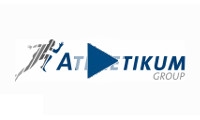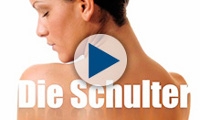Shoulder
Injuries to the rotator cuff -
Dr. Michael Lehmann
What is the rotator cuff?
The term rotator cuff is used to refer to a group of muscles and tendons that extend from the shoulder blade and surround the head of the humerus. These move the arm upwards and rotate it outwards and inwards.
This surrounding of the bone allows the rotator cuff to play a considerable role in ensuring that the humeral head is centred in the relatively small joint socket. This is also known as dynamic joint stabilisation.
Causes of rotator cuff tears
As we grow older, the frequency of rotator cuff tears increases, since the tendons are poorly vascularised and are particularly prone to signs of wear and tear. Other causes include bony spur formations on the acromion which can cause mechanical irritation and ultimately tearing of the tendons.
In younger patients, injuries to the rotator cuff occur primarily during sporting or occupational accidents, and some of them can lead to extensive tearing of the rotator cuff.
Treatments for rotator cuff tears
Depending on the nature of the injury, the ruptures of the rotator cuff may initially be amenable to treatment with physiotherapy. If the pain persists or increases, however, surgical intervention is required no more than three months later.
The options available are either purely arthroscopic procedures or those that can be combined with minimally open operations, i.e. procedures in which slightly larger incisions are required in the skin than those required for an arthroscopy, however they leave no excessive scars of the type left behind by major open shoulder surgery. The procedure that is most suitable in each individual case should be decided upon by an experience shoulder specialist based on the objective of the surgery.
The operations can be carried out as day cases. No active mobilisation should be carried out for around 6 weeks, since this is the length of time needed for biological tendon healing. The shoulder can be mobilised passively from day 1, however, to prevent adhesions and restrictions to movement developing.





